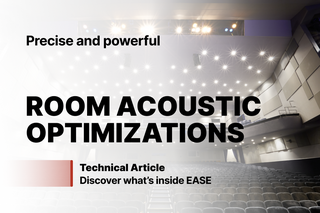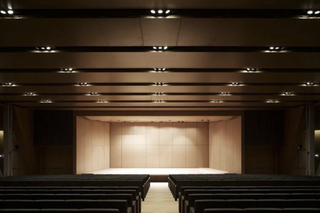GUZ BOX design + audio
Processed with:

Introduction & Project Overview
St. John's Church in Launceston, Tasmania, is the oldest church in the city, with its history dating back to its 1824 construction. The building has a volume of approximately 8,700 m³ and a surface area of around 5,078 m², with a seating capacity of about 550 people. To mark its 200th anniversary in 2024, the church committee undertook a major refurbishment, focusing on enhancing speech intelligibility and upgrading its audio system. In late 2020, All Saints Anglican Network tasked GUZ BOX design + audio, led by Tim Kuschel, to propose architectural acoustic and electro-acoustic design improvements. These upgrades were essential to meet the needs of both traditional and modern worship services while adhering to the church's heritage constraints.
Challenge
The project presented significant challenges for Tim Kuschel, given the church’s heritage-listed status, complex acoustics, and the existing audio system's limitations. The church hosts a mix of traditional and contemporary services, requiring the new sound system and acoustic design to accommodate both. The challenge was typical for a house of worship. The church’s large space, featuring a 22-meter-high dome and mainly stone surfaces, led to sustained acoustic reflections, which compromised speech and music clarity. The design brief was to enhance intelligibility for congregants, including elderly people, preserve the reverberation time, integrate modern audio features for various services, and preserve the aesthetic and architectural integrity of the space.
Project Execution & Results
Kuschel’s approach included combining detailed acoustic measurements using AFMG EASERA and acoustic simulation using EASE 5, correlating real-world data with virtual models. He worked closely with architects Cumulus Studio to select suitable acoustic materials while minimizing the visual impact of acoustic treatments on the church's design. Further, EASE 5 allowed him to design the speaker configuration to provide accurate listening area coverage and avoid undesired reflections. A minimalist audio reinforcement system was designed, incorporating Martin Audio O-Line arrays for speech intelligibility and subwoofers for music performance. The system was further enhanced with QSC loudspeakers for delayed coverage in the balcony and auxiliary areas. A flexible AV system, powered by Q-SYS amplifiers and digital signal processing, was installed to manage both spoken word services and live music performances.
With respect to the sound system, mounting the compact line arrays required a creative solution. Suspending the O-Line arrays from the 22-metre-high concrete dome was not feasible, as it sits 16 meters above the optimum speaker location. For the desired coverage, acoustic modelling indicated that the top speaker of each array should be positioned approximately 6 meters above the sanctuary floor. To achieve this, customized speaker brackets were designed to extend the arrays outward from the wall, ensuring optimal placement and performance.
The acoustic treatments, including recycled hardwood timber linings, new carpet, and Megasorber sound-absorbing panels, effectively controlled reverberation and enhanced clarity across the seating areas, including the balcony and chapel. The treatment also effectively reduced problematic reflections for vocalists and musicians. This resulted in an average Speech Transmission Index (STI) of 0.61, ensuring clear communication throughout the space, while preserving the church's historical reverberant energy for various performances. The reverberation time was recorded at a vibrant 2.5 seconds in the midrange: the organist's request for keeping the late energy was achieved. At the same time, the sound quality was improved by eliminating disruptions caused by early reflections.
The installation, carried out by Contact Group and managed by project manager Joel Taylor, adhered to strict heritage constraints and required meticulous attention to detail. The project culminated in an outstanding outcome, balancing modern technological needs with the church's historical significance. The congregants, particularly the elderly, expressed their appreciation for the acoustic enhancements, noting a significant improvement in their ability to hear and participate fully in the services.











